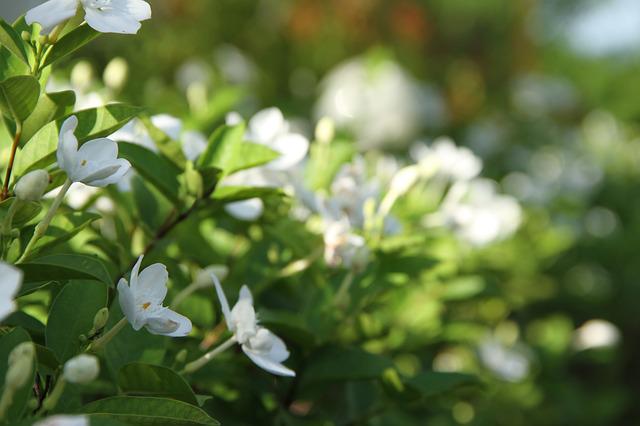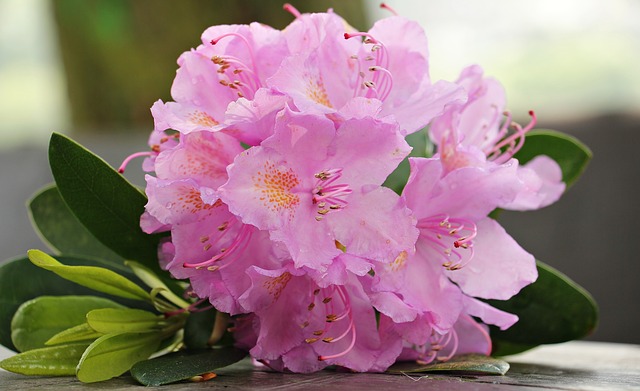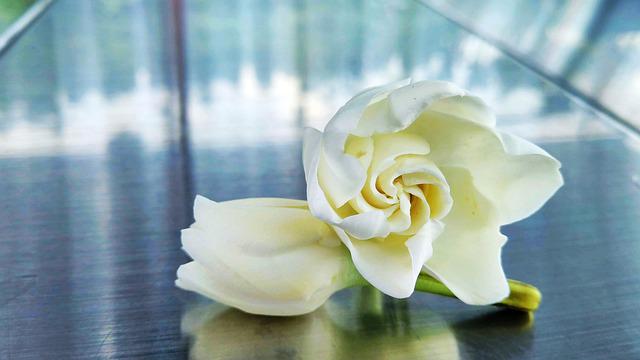Gardenia vs. Azalea: Guide To Choosing The Right Flower

Azaleas and gardenias are both beautiful and fragrant flowers. Both varieties are also very popular in decorating. Both types receive their colorful flower petals from various flowers, but they both have their unique callout to common mentions of the plant, so here are great details about these flowers to help you choose between the two.
Table of Contents
Characteristics
Growing Habit
Gardenia
Plants that grow in southern China and Japan are sometimes called “cape jasmine.” For more than just their beautiful flowers, they are known for their shiny, leathery leaves that are green and glossy. Many different types of shrubs can grow up to 8 feet tall and spread to about 5 feet wide. They are usually bushy plants with a round or oval shape all the way around. There are many different gardenia plants, and they usually flower from mid-spring to early summer. The flowers can be creamy white or ivory, single or double, depending on the cultivar.
Azalea
Varieties vary widely in their growth habits, ranging from stiffly upright to widely spreading to randomly splayed. The height of a plant can range from a few inches to more than 15 feet. Growing weeping evergreen varieties in a hanging basket is possible, such as “Pink Cascade.” Many varieties are compact and dense, while others are open and tree-like in appearance.
Hardiness Zone
Gardenia
Gardenias are perennials in USDA zones 7 to 11 and can be grown year-round. It can also be used as a hedging plant in a hot climate.
Azalea
Planting zones 6-9 are ideal for most azaleas, though some can withstand temperatures as low as zone 4. Azaleas thrive in shady, wind-protected areas.
Flowers
Gardenia
Flowers of the gardenia are typically white, with 2 to 5-inch diameter single, semi-double, double blooms or clusters. Yellow blossoms can be found in certain varieties, such as Golden Magic. It’s a strong-scented flower often used as an ingredient for perfumes.
Azalea
A funnel-shaped, two-lipped Azalea flower is often fragrant. Bell-shaped flowers are more commonly found in rhododendrons. Unlike rhododendrons, azalea flowers typically have only five stamens protruding from the center. There are, however, intermediate forms. Azaleas are known for their colorful, showy blooms, which can be found in various hues, including pink, red, yellow, orange, purple, and even white. Most azaleas have only 5-6 stamens in their flowers.
Leaves
Gardenia
Glossy evergreen leaves are characteristic of gardenias, and they are typically arranged in whorls or oppositely.
Azalea
It’s typical for azaleas to have terminal blooms because of their thin, soft, and pointed leaves that lack scales on the underside (one flower per stem).
Bloom Time
Gardenia
Depending on the Gardenia variety, flower buds appear in the late Spring to early summer or early fall. When started from seed, they take two to three years to bloom, and cuttings take about a year.
Azalea
Azaleas can be identified by their flowers bloom simultaneously, resulting in a spectacular display for a few weeks in Spring. Among the azaleas, a small subset produces flowers in dense terminal clusters, defying the general rule about spreading out their flowers. Azaleas have funnel-shaped flowers with strong perfume.
Edibility and Toxicity
Gardenia
Gardenias are safe to eat. However, they should still be grown cautiously around small children because plant parts can pose a choking risk. Wearing gloves while working with a gardenia is a good idea for those who are sensitive or allergic to the plant’s scent.
Azalea
Azalea bushes come in all shapes and sizes, and every part of them is poisonous. Grayanotoxins are found in them. Symptoms of exposure to these toxins vary from person to person and animal to animal.

The Best Time To Plant
Gardenia
Because the temperatures are milder in the fall and spring, these are the best seasons to plant gardenias. Gardenias, like camellias, prefer to be planted slightly higher up.
Spring Planting of Gardenias
When selecting a location for your gardenias, look for one with acidic, moist soil that drains well and provides moderate shade. Dig a hole that is at least as deep as the root ball, if not slightly deeper. As the root ball grows in size, you should cut a hole that is two to three times bigger than the root ball. To finish planting, put the plant in the hole and fill it with half of the soil. Water is used to get rid of air pockets in the ground.As soon as the water has been removed from the hole, you can finish filling it with soil. Gardenias can be fertilized twice a year, once in the Spring when they are planted and once in the summer. Mulch the soil to help keep it moist. Water at the base of the plant rather than from above to avoid overwatering.
Fall-Planted Gardenias
When you plant gardenias in the fall, they have time to grow before they have to start producing flowers in the Spring. They should be planted in the same manner as the spring planting method described above. After they’ve been planted, you can prune away any broken or abnormally growing branches, but only after they’ve bloomed. The new growth where flowers form will be pruned away if you wait until later in the year to prune. When gardenias are planted in the fall, they do not require any additional fertilization. Fertilize in the springtime instead of winter.
Azalea
Planting your flowering Azalea in the late Spring or early fall is the most effective time of year. They will reward you with beautiful blooms the following Spring, as long as you take the necessary steps to ensure they get off to a successful start.
Spring Planting of Azaleas
Choose an azalea that has a lot of flowers in a container. Choose a location that provides light to moderate shade throughout the year and has well-draining soil.Dig a hole twice the diameter of the root ball to level the root ball’s top with the surrounding soil. During planting, tamp the soil down around the roots and water it thoroughly to allow the soil to settle and eliminate air pockets before planting the Azalea. Mulch should be used to keep the roots moist and cool. No fertilizer is required for newly planted azaleas. Still, you will need to water spring-planted azaleas when the soil appears to be drying out to keep them looking beautiful during the growing season and help the plant establish itself during the harsh summer months. To avoid fungal problems, water should be applied from the base rather than above.
Fall Planting of Azaleas
Because the Azalea will be dormant during the fall, it is the best time to plant. When planting in the fall, you can choose a container-grown or balled-and-burlapped plant, but you won’t be able to see the flowers until the following Spring. Decide on a well-drained, moderately shady location and dig a hole large enough to allow the root ball to be level with the soil or slightly higher than the soil surface. Remove the pot or burlap from the hole and insert the plant into it. To eliminate air pockets in the soil, press the soil down around the roots and thoroughly water the area. Mulch your azalea after planting to aid in protecting the roots during the winter months. It will take less water to establish an azalea planted in the fall than one planted in the Spring, and it will have more time to establish itself before the weather becomes hot.
Gardenia vs. Azalea: Which is Better?
This isn’t easy to answer, as both plants have their benefits. Gardenia is a tall, luscious shrub popular for its large, fragrant flowers. These flowers are used in floral and culinary arrangements, and the tree is also famous for its wood. On the other hand, Azalea is a deciduous shrub that is well-known for its large, colorful flowers. These flowers are used in bouquets and the production of tea and wine.
Both plants have unique characteristics that make them appealing to different people. Gardenia has a more sophisticated look, while Azalea has a more rustic appeal. Gardenia also has a more extended bloom season, while Azalea’s blooms are more colorful and last longer. Ultimately, it depends on what you are looking for in a plant and which one is more suited for your specific needs.

